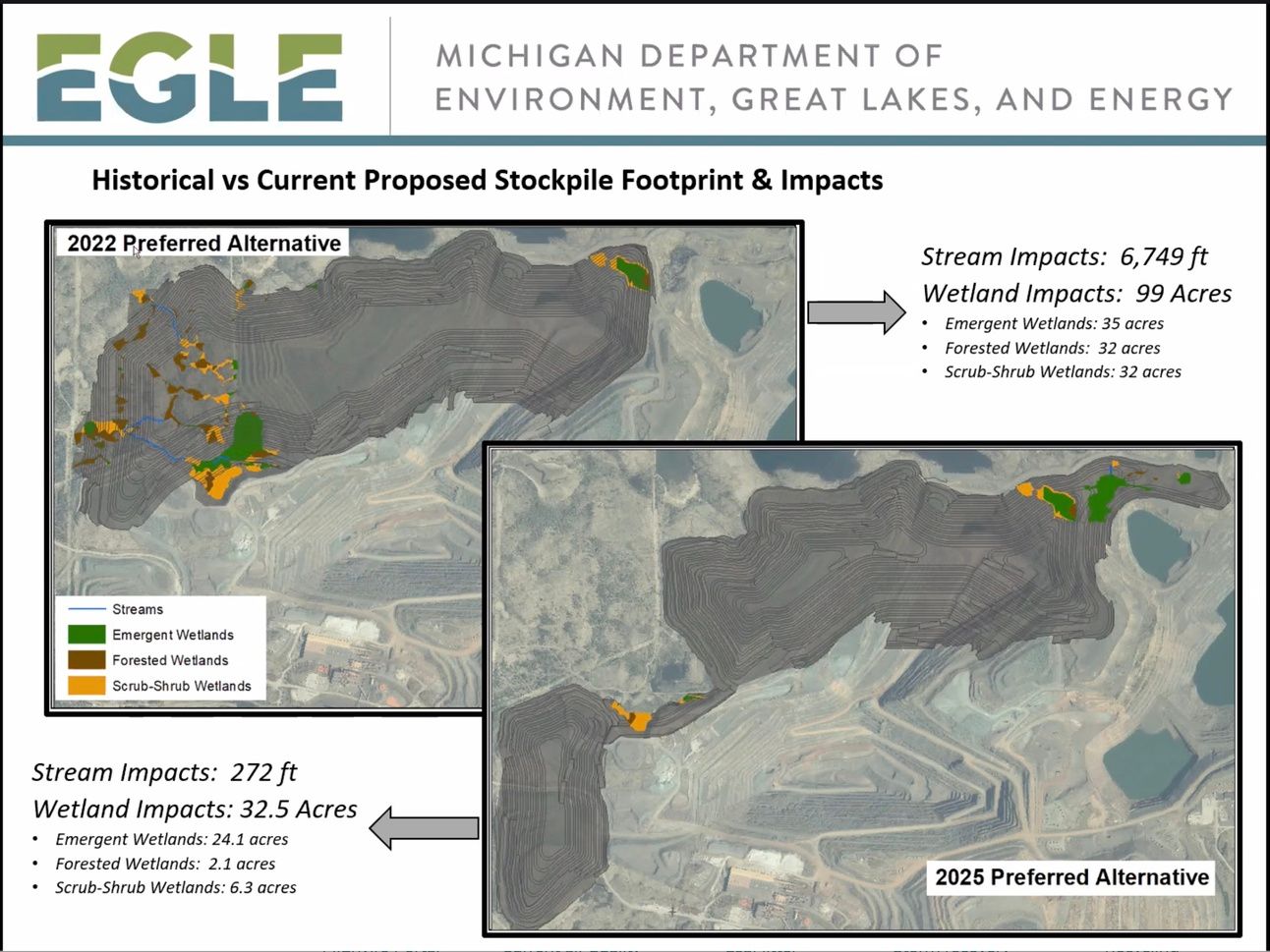- The906Report
- Posts
- Critics Find Flaws in Tilden Mine Permit Application
Critics Find Flaws in Tilden Mine Permit Application
Public hearing held on Cleveland Cliffs' plans for expanded waste rock storage area.
Despite changes, a revised plan to fill streams and wetlands at the Tilden Mine in Marquette County, Michigan, is still unacceptable, according to environmental advocates.
Cleveland Cliffs, Inc. has applied for a so-called wetland permit in order to expand waste rock storage at the mine. If approved, the permit would allow Cliffs to continue operations at the mine for another 20 years.
Cliffs proposes to fill 32.5 acres of wetlands, down from 99 acres in the original permit application. That would still be an unusually large wetland impact for a project, according to EGLE, with 10-20 acres being more typical.
Despite the reduced project scope, “32.5 acres of wetlands is still extreme by Michigan and national standards, and would have tremendous impacts on a watershed already heavily impacted by mining,” said Jane Fitkin of Citizens for a Safe and Clean Lake Superior during a March 10 public hearing on the proposed wetland permit.
The Cliffs proposal would also permanently fill 272 feet of streams in the Escanaba River watershed.
Less destructive alternatives may exist
State law requires that a wetland permit application must be rejected if a less-destructive, “prudent and feasible” alternative exists.
Fitkin pointed to nearby alternate sites for the waste rock stockpiles that would minimize watershed impacts “with acceptable increases in costs” to the mining company
One alternative would reduce the wetlands impact to 13.6 acres, with a modest impact on overall costs, according to hearing testimony.
“The economic effect on the company of adopting this option is relatively slight, amounting to an increase of only $11 million over the lifetime of the project,” said Brian Noell of the Yellow Dog Watershed Preserve.
State law also requires Cliffs to mitigate its wetlands impacts. This can be done by creating man-made wetlands, restoring degraded wetlands, or preserving existing wetlands. EGLE regulations generally require mitigation to be done in the same watershed where the impacts occur, according to Fitkin.
Commenters say wetlands mitigation plan falls short
Beaver wetlands and headwater lakes, including Grass Lake, Lake Sally and Lake Ogden, are a better choice for mitigation than the sites proposed by Cliffs, Fitkin said. These locations “have been degraded by the development of roads, railroad grades, utility corridors, logging and 175 years of iron mining under Cleveland cliffs ownership,” Fitkin said, “and yet they still provide valuable ecosystem services.”
Cliffs has proposed in-watershed wetlands preservation 8 miles south of the mine site and at the Republic Wetland Preserve 18 miles away, in a different watershed.
“We are concerned that although the proposed wetland mitigation is partly within the same watershed, it would be more impactful if it were within the project area itself, ideally the Ely Creek corridor, containing cold water trout stream, an active bald eagle’s nest, and evidence of gray wolf activity,” Noell said.
Steelworkers support Cliffs proposal
Bryan Fisher and Michael Grondz of the United Steelworkers Union spoke in favor of the Cliffs permit application, pointing to the regional economic benefits and environmental stewardship of the Cliffs operation.
“This application strikes the balance of being economically feasible to allow the Tilden Mine to continue to operate, protects the environment and minimizes the footprint,” Grondz said.
However, under state law, public support for a project, in and of itself, is not a criterion EGLE can use in evaluating a wetland permit, according to agency staff.
The public comment period for the Tilden Mine wetland permit ends March 20. Comments can be submitted through MiEnviro Portal:
Jane Fitkin provided editorial input into this report.
Below: Comparison of stockpile footprints, current and original (EGLE graphic).
